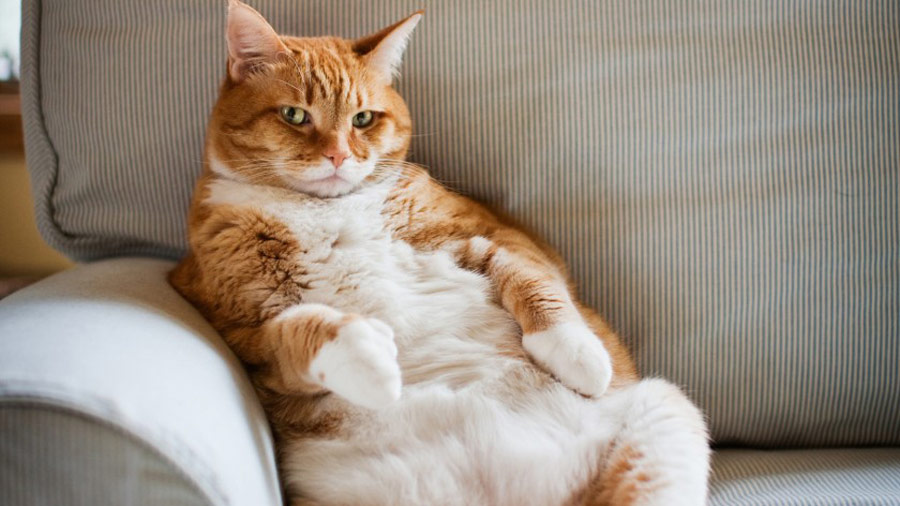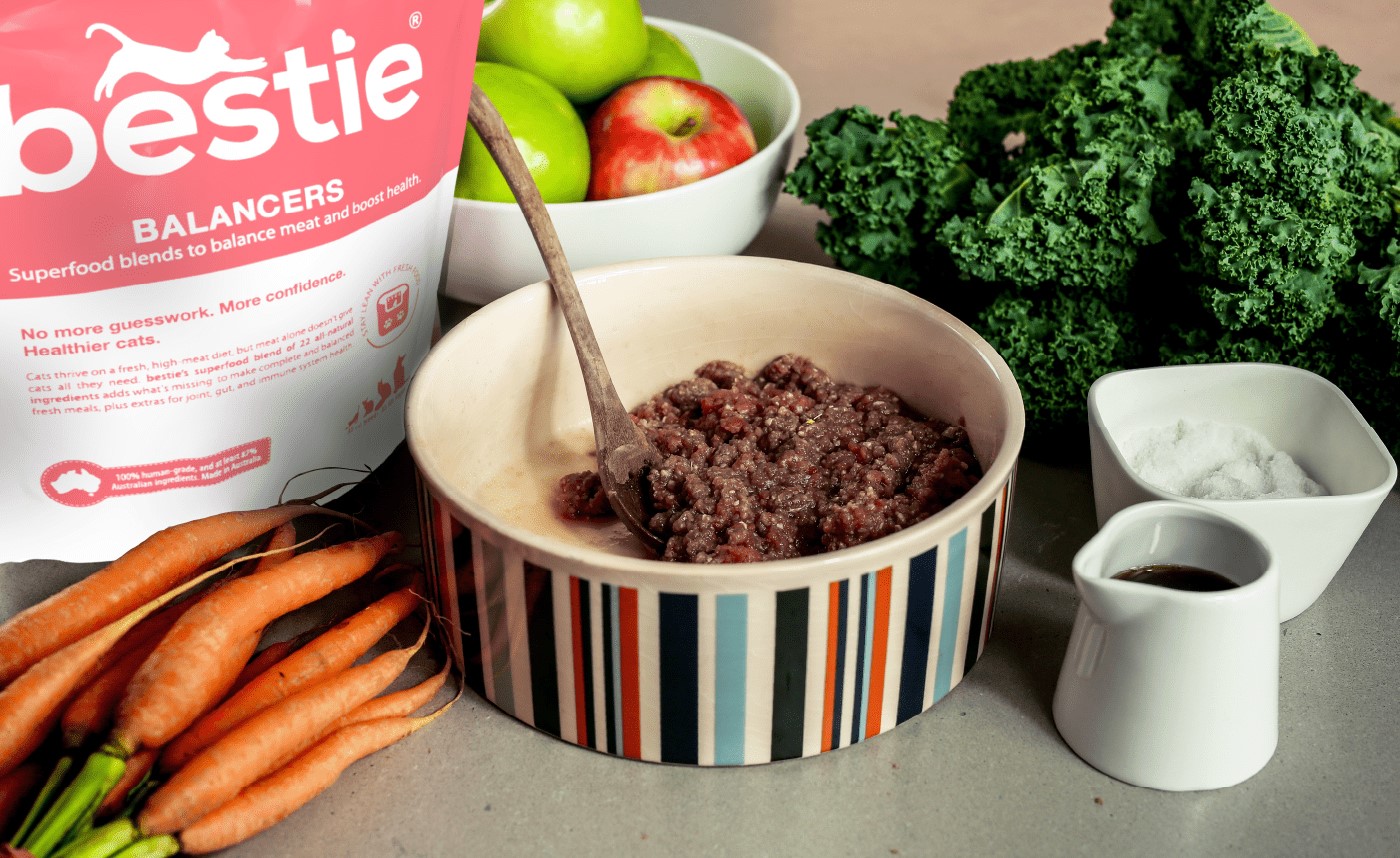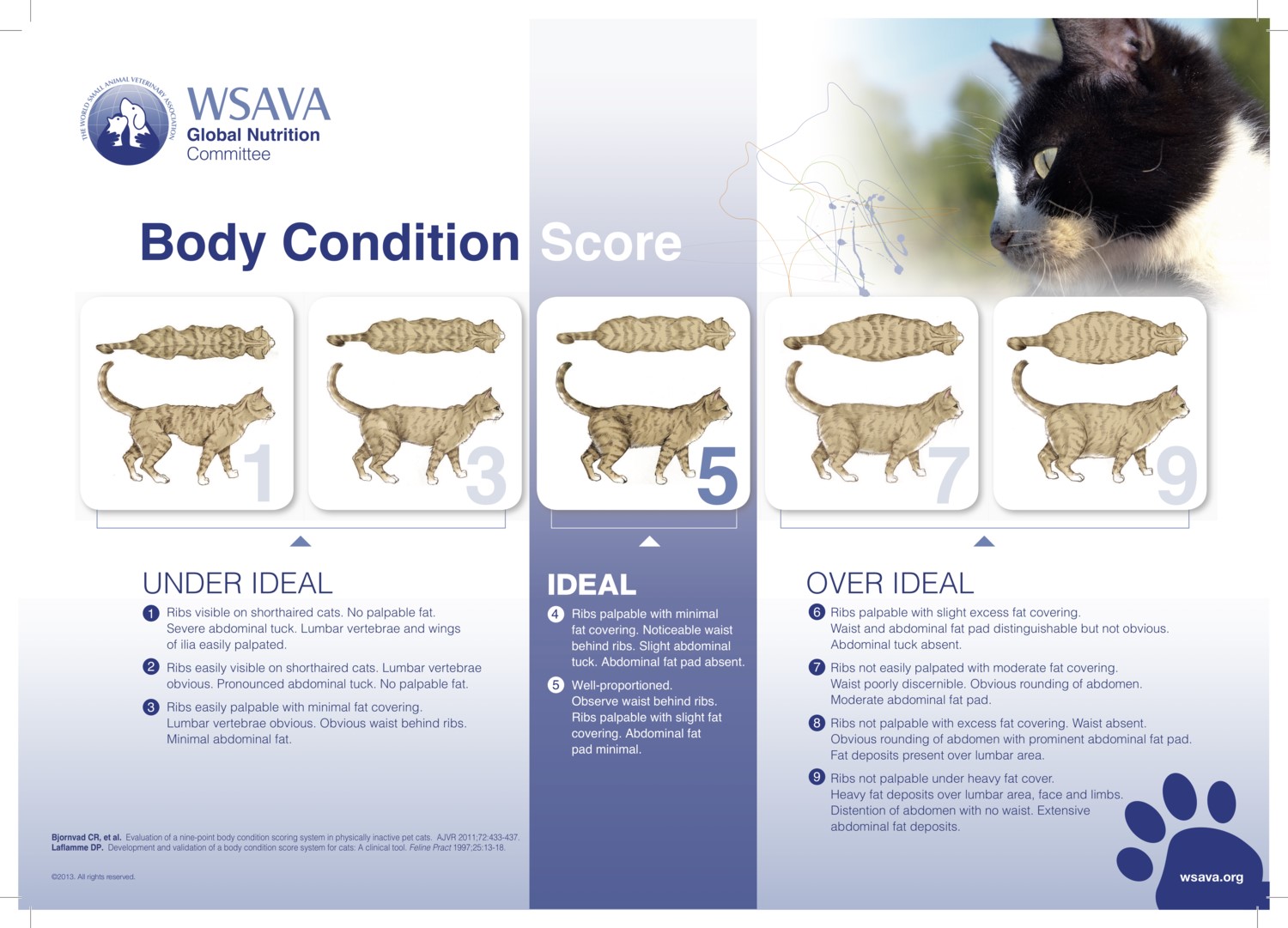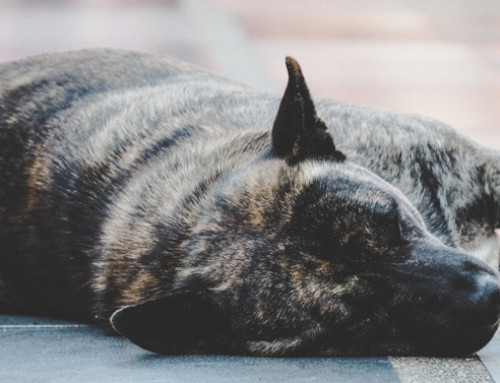While it’s easy to miss a little weight around the tummy, it’s worth doing a simple body composition score on your cat, because the health impact of being overweight can be more serious than you think.
You know that obesity and being overweight is rife in humans, and you also know the myriad of health problems that can cause. That same ‘modern day epidemic’ is affecting dogs and cats too.
In fact, obesity is currently one of the greatest health and welfare problems facing domestic cats around the world. Multiple, recently published studies, suggest that in developed countries, anywhere from 16% to 63% of pet cats are overweight or obese.
Being overweight leads to increased risk of a series of health issues :
• Urinary tract disease
• Diabetes mellitus
• Respiratory disease
• Orthopaedic diseases
• Neoplasia
• Dermatological conditions
• Oral conditions
• Hypertension
• Diarrhoea
In a study done with 8,159 cats, oral disease, dermatopathy, and urinary disease were the most common diseases. Over 40% of obese and overweight adult cats were diagnosed with at least one disease in the oral disease category. Obesity was also more common for middle-aged cats (between five and 11 years), and de-sexed male cats.
Not only is being overweight not good for your cat, it can be expensive too. According to Banfield’s State of Pet health, owners of overweight cats spend 36% more on diagnostic procedures, compared with the owners of healthy-weight cats.
Why does your cat get fat – is it as simple as over-feeding?
The answer, funnily enough, is no. As well as a number of cat-related factors, age, gender and others, the type of food plays a big role too. Here’s what they found:
- Dry food is a risk factor: Feeding dry food purchased from a supermarket was a risk factor for obesity, and not feeding any dry food was protective. The latter finding is consistent with several (though not all) previous studies that have demonstrated that feeding a dry diet (as either all of the diet, or as the majority of the diet) is a risk factor for obesity in cats.
- Raw was generally helpful: Specific types of raw feeding practices (but not all) were associated with a decreased risk of obesity in cats. Feeding human-grade raw meat or feeding raw bones was significantly protective, whereas feeding a raw commercial diet was not significant.
- Homemade was also positive: Feeding a home-prepared diet was also associated with a substantially decreased risk of obesity. (But make sure it’s balanced: see Bestie Kitchen’s balancing supplement for cats, for example. bestie balancing supplements are designed to be added to fresh meat – raw or lightly cooked – to make a complete and balanced meal, as well as support good gut, immune system and joint health.)
There was another very surprising factor. Us.
Are you likely to have a fat cat?
The researchers set out to determine if there are particular owner psychological factors that are strongly correlated with the development of overweight or obesity in cats. In other words, is there something about us, that makes cat fat…
They developed an online questionnaire designed to assess owner personality, self-control and attachment to their cat, feeding practices, cat health and body condition, and owner socio-demographics.
After analysing 6,835 responses from cat owners from 81 countries, they found that of the owner-related risk factors, at the top of the list were:
- Personality (level of conscientiousness): cat owners with low scores for conscientiousness are at increased risk of owning an overweight or obese cat. In people, high conscientiousness is associated with self-discipline, diligence and organized meal planning. It is possible that cat owners with these traits are more able to monitor and regulate their cat’s food intake, and less likely to feed their cat impulsively in response to begging.
- Preference for immediate vs. delayed reward: owner preference for delayed reward was associated with a decreased risk of feline obesity. A possible explanation for this is that the rewards of preventing feline obesity are likely to be a while coming. There may be a big gap between the time when obesity typically develops in cats (early life) and the period of time when owners may see the benefit of earlier restraint (absence of a particular disease, for example).
- Inconsistent feeding practices: This was a surprise! It turns out that owners feeding a less consistent diet are at lower risk of owning an obese cat, and, cats fed the same food everyday were at increased risk of obesity. One reason may be that feeding a wide variety of different foods, may decrease boredom and begging, which may subsequently decrease owner temptation to overfeed their cat.
How do you know if your cat is fat?
Well, doing a simple body composition score can help. Take a look at your cat from above and the side, and compare it to the following graphic:
If your cat scores more than 7, then it’s time to take action. Switch to a fresh, high protein low carb diet, and adjust quantities. You may want to consult your vet for advice, or check out the Pet Weight Check, here.









Leave A Comment